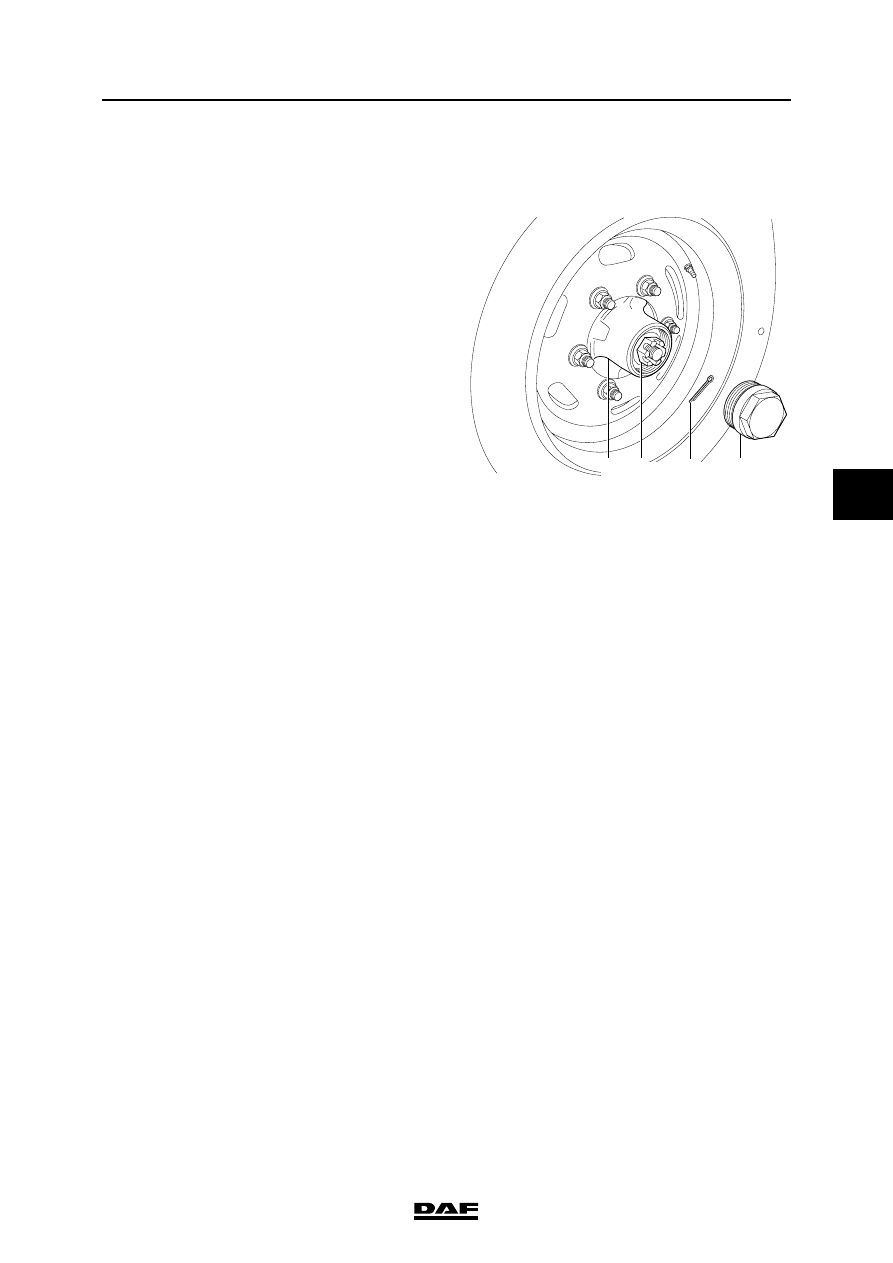Content .. 1198 1199 1200 1201 ..
DAF CF65, CF75, CF85 Series . Manual - part 1200

©
200423
3-39
Inspection and adjustment
EXPLANATORY NOTES ON THE MAINTENANCE ACTIVITIES
ΧΦ85 series
5
3.44 RETIGHTENING THE HUB NUT OF LEADING REAR AXLE 09N044
(FTP-TYPE VEHICLES)
1.
Remove the hub cap (4) using special tool
(DAF no. 1329498).
2.
Lift the leading rear axle.
3.
Release the brakes.
4.
Remove the split pin (3) from the hub nut (2).
5.
Tighten the hub nut to the specified
tightening torque, see "Technical data". Turn
the wheel at least 5 revolutions in clockwise
direction and then 5 revolutions in anti-
clockwise direction when fixing the hub nut.
6.
Check that the wheel rotates smoothly.
7.
Turn back the hub nut until the split pin can
be fitted. Fit a new split pin.
Note:
There are 2 split pin holes in the axle journal.
Select the split pin hole where the hub nut
needs to be turned back least.
8.
Fit the hub cap. Tighten the hub cap to the
specified torque using the special tool
(DAF no. 1329498), see "Technical data".
9.
Adjust the brakes.
S7 00 657
1
2
3
4